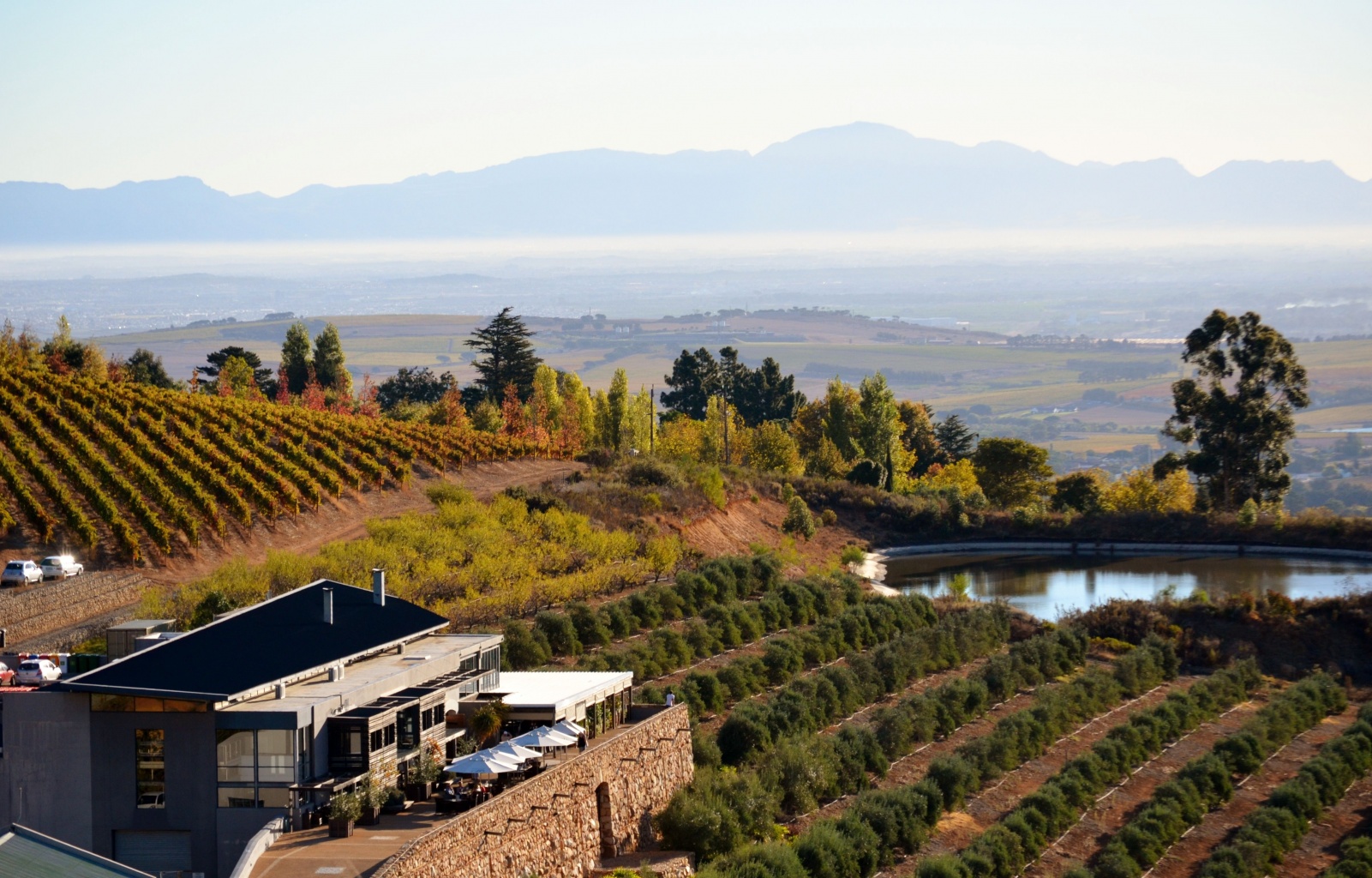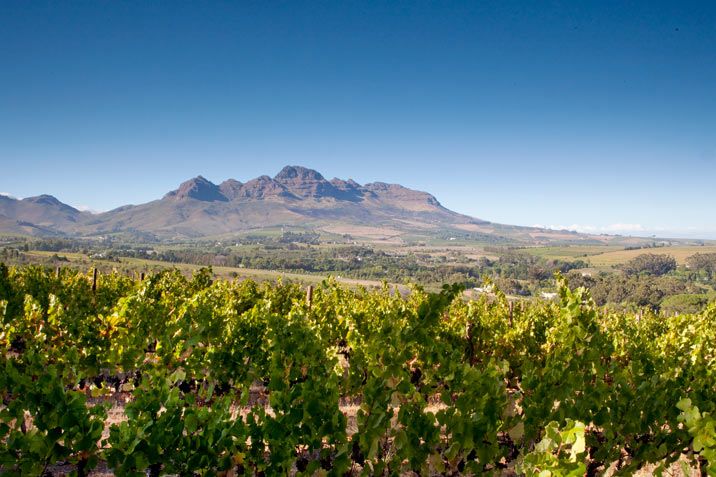The famous ‘Wine Route’, Western Cape, begins in the city of Stellenbosch and passes through the valleys of fabulous beauty - with green vineyards, age-old oaks and branchy Cape pines. The local climate proved to be extremely suitable for the cultivation of wine grapes, and the wine production is among the main activities of the farmers here.

The city of Stellenbosch began its history in 1679 as the second European settlement in South Africa after Cape Town. Its architecture is unique: traces of the Victorian era are perfectly mixed with the African traditions. There are many buildings in both the Cape Dutch and the Victorian styles. It is pleasant to stroll at a leisurely pace along the streets, as if lost in time, as well as along the wide boulevards under the shade of venerable oaks - some oaks were planted when the town was founded. There are restaurants, coffee houses and wine shops at every turn where you are always offered to taste wines and can hear many interesting stories. The largest university in the country is located in Stellenbosch.
The friendly city is surrounded by green gardens and countless vineyards. Three and a half centuries ago, the French Huguenots arrived here and planted the first grapevine in South Africa. They realized at once that the combination of the climate and soil make this region ideal for growing the grapes. The South African wines are famous since 1679 when the city was founded, which became the centre of South African winemaking. It was in the Stellenbosch Valley that the grapevine brought here from Europe took root.
The residents of Stellenbosch were the first to appreciate the commercial opportunities for a wine tourism, and in 1971, the South Africa's largest tourist route, the West Coast Wine Route, was launched. This route offers visiting the wine farms, tasting various wines and all-natural food. The West Coast Wine Route, Western Cape, covers a large area in the Stellenbosch, Paarl and Franschhoek regions.

Part 1
Waterkloof Estate is located in the southeastern part of Stellenbosch in the Somerset West region, just 6 km from the ocean. This region has become a mecca for premium red wines made from such grape varieties as Syrah (Shiraz), Merlot, Cabernet Sauvignon and their blends. The grapevines are planted at an altitude of 100 to 300 metres, are well aerated by the refreshing breeze from the ocean, and receive moderate rainfall. Waterkloof, the second certified biodynamic winery in South Africa, produces exotic and really natural wines made observing the strict classical canons of winemaking, with minimal interference.
The Waterkloof Estate is the project of Paul Boutinot, the owner and founder of the renowned Boutinot Wines wine trading company. In 2004, Paul moved to South Africa and dreamed of finding a farm where he could live in peace and do what can become his lifetime project. He immediately determined the potential of these places: on a natural mountain amphitheater, at an altitude of 300 m, he saw quite ripened grapevines already growing.
The region extends from False Bay inland and is exposed to the so-called ‘Doctor Cape’ - the refreshing strong wind blowing from the bay in summer. ‘Doctor Cape’ lowers the air temperature so much that the local climate becomes similar to the Mediterranean one.
Nadia BARNARD, Winemaker from Waterkloof Wines:
“The first wine we recommend to try is False Bay Sauvignon Blanc. It is called ‘Windswept’ because winds blow all the time in the False Bay region, including through the vineyards, affecting the yield of grape crops in a natural way.”
23-year-old farmer Christian Lutz, a lover of the nature and horses, worked at the farm. Over the years, he has become a real biodynamics guru, and he uses such words as biovariance, natural compost and Moon phases. In a short time, the most important decisions were taken - what varieties should be planted, what the planting density and the vine tying-up system should be. A cellar was built that was perfectly consistent with the philosophy of producing the biodynamic wines with minimal interference.
Immediately after the purchase of the farm, a large number of trees and other plants were purchased to revive the flora and fauna of the farm. The emphasis was made on the grape varieties Chenin Blanc, Sauvignon Blanc, and red wine grape Rhône varieties such as Syrah and Mourvèdre that were suitable not only for the soil, but also for the local climate. Since 2007, Waterkloof has been practicing organic winemaking, and since 2009, they switched to the biodynamic agriculture using seven specially trained horses. Waterkloof has received full-fledged organic and biodynamic certifications - literally months before its best harvest in 2015.
Waterkloof's biodynamic farming practice is perfectly combined with natural, real cheese, preservative-free, without any artificial coloring agents or flavours. Therefore, the Healey's cheese farm is located next door. The cheese is aged here for up to 12 months and the ‘good guys’ are used - beneficent bacteria that do not die during the pasteurization, which makes the cheese taste so special. In the farmer's restaurant, you can always buy fresh cheese and have your lunch or dinner. This delicious Cheddar cheese made at the farm from unpasteurized milk has been among the top 4 types of Cheddar cheese in the world since it appeared in 2005.
To be continued


